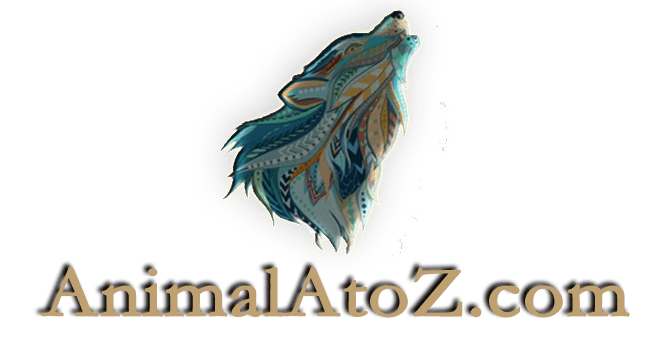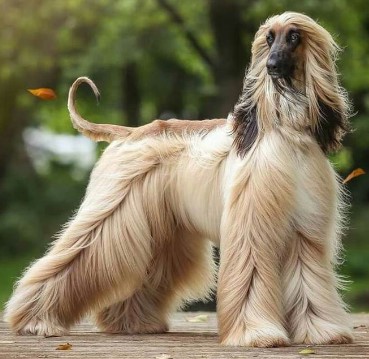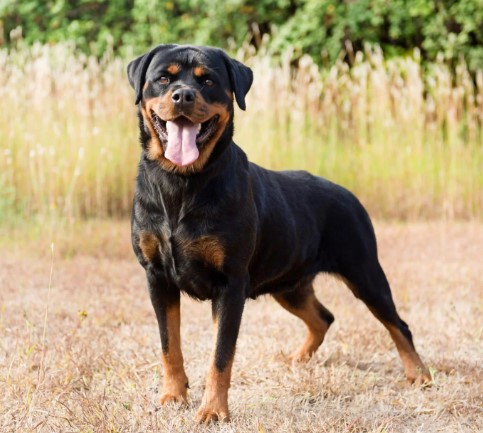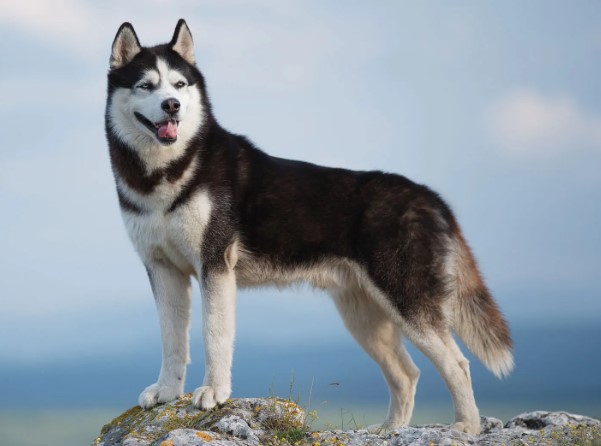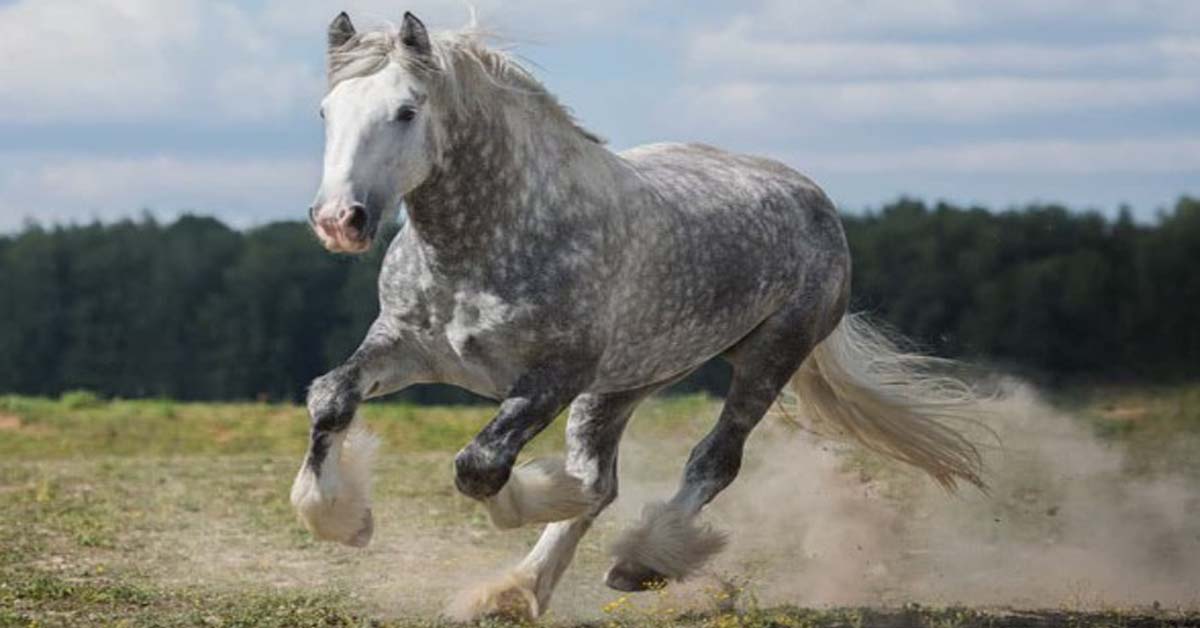Introducing Of The Afghan Hound:
The Afghan Hound, a canine breed with its roots believed to trace back to the mountainous terrain of Afghanistan, is renowned for its striking features. These dogs are characterized by their luxurious, silky coats, along with distinctive physical traits including a slender head, a gracefully curved tail, and the elegant cascade of hair that adorns their ears and limbs. Afghan Hounds exude a regal demeanor, complemented by their strong sense of independence.
Originally bred for the formidable task of hunting large game such as mountain lions and wild sheep, Afghan Hounds have since transitioned into cherished companions. This breed stands as one of the most ancient and enduring among all canine breeds, with historical evidence attesting to their existence dating back to the distant past.
Afghan hounds at a glance:
| Origin | Afghanistan |
| Height | Dogs 61–73 cm (24–29 in) |
| Weight | Dogs 20–27 kg (44–60 lb) |
| Life span | 13–17 years |
| Size | Large |
| Color | Fawn, Gold, Brindle, White, Red, Cream, Blue, Gray, Tricolour |
| Coat | Long and fine |
Afghan Hound About the Breed:
The Afghan Hound, recognized for its lengthy, silky fur and distinctive appearance, traces its origins to the mountainous terrains of Afghanistan, where it once served as a versatile hunter and herder. This breed boasts a substantial size, typically weighing in at around 44 to 60 pounds and standing at an impressive 29 inches tall at the shoulder.
Afghan Hounds are celebrated for their independent and somewhat reserved disposition, which can pose training challenges. Nevertheless, they are equally renowned for their deep affection and unwavering loyalty towards their human companions. This breed’s exceptional agility and graceful demeanor have earned them a special place in both dog shows and as cherished pets. Maintaining their trademark thick and silky coat requires regular grooming.
Breed Traits & Characteristics:
Family life:
Affectionate with family:
The Afghan Hound exhibits a strong sense of independence and a somewhat reserved nature, yet they possess the capacity for affection toward their family members. They are recognized for their loyalty and tenderness towards their owners, often forging deep connections with them.
However, they may maintain a reserved demeanor when encountering strangers and might not display the same outgoing nature seen in some other breeds. Nevertheless, through diligent socialization and effective training, Afghan Hounds can evolve into wonderful additions to a family, blending seamlessly into their new home.
Good with small children:
Afghan Hounds are generally not regarded as suitable companions for small children, primarily because of their independent and reserved temperament. These dogs tend to be rather sensitive and may not tolerate rough handling or loud noises well. Furthermore, their strong prey drive can lead them to chase after small animals, including children.
To maintain a safe environment for both the dog and children, it’s crucial to closely supervise any interactions between Afghan Hounds and young ones. While training and socialization efforts can be beneficial, they may not entirely alter the dog’s inherent disposition. Therefore, it’s advisable to explore alternative breeds that are better suited for households with small children.
Good with other dogs:
When appropriately socialized and trained, Afghan Hounds can coexist harmoniously with other dogs. Nonetheless, it’s vital to bear in mind that Afghan Hounds tend to be independent by nature, which may make them less naturally outgoing or sociable compared to some other breeds.
Additionally, it’s crucial to take into account the unique personality of each Afghan Hound, as individual variations may lead to differences in sociability. Therefore, it is prudent to introduce an Afghan Hound to other dogs within a controlled and supervised setting to ensure a safe and gradual acclimation process.

Physical:
Shading level:
The Afghan Hound possesses a distinctive, long coat that is typically characterized by its silky and fine texture. This coat often exhibits a remarkable “shading” effect, where the hair on the back and sides appears darker than the hair on the shoulders, chest, and underbelly. This striking contrast is attributed to the presence of a specific type of hair known as guard hairs, which are longer and coarser compared to the downy undercoat.
These guard hairs typically sport a darker hue, contributing to the Afghan Hound’s unique shading pattern. The breed’s coat showcases a diverse array of colors, including but not limited to black, white, cream, silver, blue, and red.
Coat Grooming Frequency:
Maintaining the long, silky coat of an Afghan Hound is essential to preserving their beauty. To keep your Afghan Hound looking their best, here are some grooming tips to follow:
- Regular Brushing: To prevent tangles and mats, make sure to brush their coat regularly. Use a slicker brush and a metal comb to gently work out any knots or tangles.
- Tidy Up Around Ears and Feet: Trim the hair around their ears and feet to keep it neat and tidy, enhancing their overall appearance.
- Occasional Baths: Give your Afghan Hound an occasional bath using a mild dog shampoo. Be thorough in rinsing the coat to eliminate any residue that could lead to matting.
- Gentle Blow Drying: When drying their coat, use a low heat setting on the blow dryer to prevent damage to the hair while ensuring they are thoroughly dried.
- Comprehensive Care: In addition to coat care, remember to clip their nails, clean their ears, brush their teeth, and regularly check for any signs of infection or other health issues.
- Professional Grooming: Consider engaging a professional groomer for regular trims and to uphold the breed’s signature long, silky coat.
By adhering to these grooming practices, you’ll help your Afghan Hound maintain their magnificent appearance while also ensuring their overall health and well-being.
Maintaining the pristine appearance of Afghan Hounds, known for their long, silky coats, necessitates diligent grooming. To ensure they always look their finest, daily brushing is essential to eliminate tangles and prevent matting. Regular baths and trims every 4-6 weeks are also crucial to preserve their unique aesthetic.
It’s worth emphasizing that grooming Afghan Hounds can be a time-intensive task due to their abundant hair. As a result, seeking the assistance of a professional groomer may be a practical option to keep up with their grooming needs effectively.
Drooling levels:
Compared to other breeds, Afghan Hounds are recognized for their minimal drooling tendencies. Their short, smooth coat is less prone to retaining moisture, and their mouths are not as loose as some other breeds, which effectively minimizes drooling.
Furthermore, Afghan Hounds are not typically associated with a strong prey drive or hyperactivity, both of which can be factors contributing to their reduced propensity for drooling.
social:
Openness to strangers:
The Afghan Hound’s reputation for aloofness and independence sets them apart, rendering them less approachable to strangers when compared to other breeds. Their demeanor is often described as reserved and dignified.
Typically, Afghan Hounds do not readily warm up to unfamiliar individuals and can exhibit wariness towards those they don’t recognize. However, early training and socialization play a pivotal role in helping them become more at ease and accommodating around new people.
Adaptability level:
The Afghan Hound, celebrated for its grace and stunning appearance, possesses an inherent independence and aloofness. This characteristic may render them less adaptable to alterations in their surroundings or daily routines, potentially making them a challenging choice for novice dog owners.
Nonetheless, when provided with the appropriate training and socialization, Afghan Hounds can transform into affectionate and devoted companions. They thrive in households that offer a tranquil and consistent atmosphere, rather than a bustling and disorderly one.
Watchdog/protective nature:
Afghan Hounds are not generally recognized for their skills as watchdogs or for their protective instincts. Their usual description revolves around their independence and aloof demeanor. Historically bred for hunting and pursuing games amid the Afghan mountains, they may exhibit a strong prey drive and a tendency to chase small animals.
However, Afghan Hounds typically do not display aggression towards people and are not regarded as suitable candidates for the role of guard dogs.
Playfulness level:
The Afghan Hound is distinguished by its independent and reserved disposition. Although they can exhibit playfulness at times, their overall level of playfulness tends to be relatively low. They are more inclined to participate in activities on their own initiative, rather than actively seeking out playtime with their owners.

Personality Of Afghan hound puppies:
The Afghan Hound, renowned for its elegant visage and self-reliant character, stands out among dog breeds. Typically reserved and distant around strangers, they reserve their loyalty and affection for their owners. Although they can display a streak of stubbornness, training an Afghan Hound is a task well within their considerable intelligence, making them adept at mastering a range of tricks and commands.
This high-energy breed thrives on regular exercise and ample room to frolic and stretch their legs. Their striking long, silky coat adds to their allure but necessitates consistent grooming to preserve their appearance. In summary, the Afghan Hound is a captivating and distinct breed that, in the hands of the right owner, can transform into a loving and devoted companion.
Need mental stimulation:
Afghan Hounds possess remarkable intelligence, necessitating mental stimulation to ward off boredom and maintain their engagement. To cater to their mental needs, consider activities like puzzle toys, training sessions, agility training, and advanced obedience exercises.
Moreover, Afghan Hounds delight in sensory-focused activities like tracking and scent work that put their acute senses to good use. For their overall well-being, it’s vital to provide them with regular exercise, encompassing both physical and mental challenges.
Energy level:
The Afghan Hound, characterized by its independent and reserved demeanor, is not commonly associated with being overly energetic or high-energy dogs. They tend to thrive in a tranquil and composed household environment.
While they do demand routine exercise and grooming, their energy level doesn’t match that of breeds like retrievers or herding dogs, which are renowned for their higher activity levels. Afghan Hounds prefer a more serene pace of life.
Barking level:
Afghan Hounds are recognized for their deep, low-pitched bark. They typically don’t have a reputation for excessive barking; however, like all dogs, they may vocalize when stirred by excitement, fear, or a protective instinct. Effective training and socialization play pivotal roles in curtailing excessive barking tendencies in any breed.
Trainability level:
Training an Afghan Hound can present challenges owing to their independent disposition. They often exhibit traits of stubbornness and strong-willed nature, preferring to follow their instincts over obedience commands. Additionally, their pronounced prey drive can pose difficulties in managing their behavior around smaller animals.
Nonetheless, with a combination of patience, consistency, and positive reinforcement training methods, it’s entirely feasible to mold an Afghan Hound into a well-mannered companion. Commencing training from an early age is pivotal. Obedience training holds particular importance for Afghan Hounds, alongside the essential aspects of socialization and exposure to various individuals, animals, and environments.
The Afghan Hound’s History and Origins:
The Afghan Hound, hailing from the rugged landscapes of Afghanistan’s mountains, was originally employed by nomadic tribes for the dual purposes of hunting and herding livestock. Their breeding was specifically tailored to endure the demanding terrain of these lofty regions.
Characterized by their unique long, silky coat and slender, svelte physique, Afghan Hounds made their introduction to the Western world during the latter part of the 19th century. This remarkable breed earned formal recognition from the American Kennel Club in the year 1926.
The Afghan Hound’s Appearance
The Afghan Hound is a breed characterized by its luxurious, lengthy hair, giving rise to a distinctively silky coat. These dogs sport a slender and graceful head, complete with expressive, large eyes and elegant, pendulous ears. Their physique is both athletic and lithe, complemented by an extended, flowing tail. Typically, Afghan Hounds stand between 25 and 29 inches tall at the shoulder and weigh approximately 44-60 pounds.
Their coat presents an array of hues, including black, white, cream, and silver. What truly sets them apart is the impressive length of their silky hair, which can reach up to 10 inches on their ears and legs, further enhancing their striking appearance. Read More History en.wikipedia.org
The Afghan Hound’s Temperament: What You Need to Know
The Afghan Hound is a breed that exudes pride and independence. Renowned for their elegant and stately presence, they also possess an aloof and reserved temperament. While they can be somewhat distant and autonomous, their loyalty and affection for their owners run deep.
Generally, Afghan Hounds are not the top choice for first-time dog owners. They thrive under consistent and assertive training and early socialization to prevent the development of stubbornness or disobedience. Their reserved disposition towards strangers makes them less ideal for families with small children.
Due to their self-sufficient nature, they flourish in the care of individuals who can offer them ample exercise and mental stimulation. Their opulent, thick coat is another hallmark, requiring regular grooming to maintain its splendor.
Common Health Issues for the Afghan Hound
Afghan Hounds are a breed of dogs that have a predisposition to certain health concerns. Among the common issues that can affect Afghan Hounds are hip dysplasia, gastric torsion (bloat), and skin allergies.
In addition, they may also be susceptible to certain forms of cancer. Owners must stay informed about these potential health challenges and maintain a close partnership with a veterinarian to manage them should they arise. Consistent veterinary check-ups and proactive preventive measures play a crucial role in mitigating the risks associated with these health conditions.
General health checks for Afghan Hounds
Afghan Hounds generally enjoy good health, but like all breeds, they can be susceptible to specific health concerns. To maintain their well-being, consider the following general health checks for Afghan Hounds:
- Regular Veterinary Check-ups: Routine veterinary visits are essential for overall health assessment and early detection of potential issues.
- Eye Exams: Afghan Hounds can be prone to eye conditions like cataracts and progressive retinal atrophy (PRA). Periodic eye examinations by a veterinarian are advisable.
- Hip Dysplasia Screening: Hip dysplasia, a genetic condition impacting hip joints, can lead to arthritis and lameness. Your vet may recommend X-rays to evaluate your hip health.
- Cardiac Assessment: Afghan Hounds are at risk for specific heart conditions such as Dilated Cardiomyopathy (DCM). Regular cardiac examinations by a veterinarian are important.
- Grooming: Afghan Hounds boast long, dense coats that necessitate regular grooming to maintain cleanliness and prevent matting, which can lead to skin issues.
Additionally, a balanced diet and a regimen of regular exercise are vital components of their overall well-being.

Best Caring Tips For Your Dog
Afghan Hounds cherish their time indoors, relishing the company of their families. While they exude relaxation and serenity at home, their innate activity levels require daily exercise. Ideally, this includes structured walks or runs on a leash and the freedom to roam in a secure, fenced area.
For those considering yard time, it’s imperative to invest in tall and robust fencing. Afghan Hounds are experts at escaping, and once they’re on the loose, they’re incredibly challenging to catch. (Keep in mind, they can even outpace horses!) Consistent obedience training is key, with positive reinforcement methods proving to be the most effective approach.
Best Food For Afghan Hounds:
- FirstMate Limited Ingredient Diet Grain-Free Pacific Ocean Fish Meal Formula Dry Dog Food
- Merrick Backcountry Freeze-Dried Raw Grain-Free Chicken-Free Pacific Catch Recipe Salmon, Whitefish & Trout Dry Dog Food
- I and Love and You Nude Food Grain-Free Simply Sea Dry Dog Food
More Food On www.hillspet.com
Feeding Of The Afghan Hounds
Afghan Hounds are celebrated for their graceful, lengthy coats and can be quite selective when it comes to their food. When feeding an Afghan Hound, prioritizing a premium, grain-free diet tailored to their unique requirements is crucial.
This diet may consist of elements like lean meats, fruits, and vegetables. Equally important is the practice of avoiding overfeeding and closely monitoring their weight to safeguard their overall health. Furthermore, Afghan Hounds should have continuous access to clean, fresh water to remain adequately hydrated.
Training Your Afghan Hound: Tips & Tricks
Afghan Hounds are a strikingly beautiful and self-reliant breed, though they can present training challenges. Here are some valuable insights and techniques to facilitate the training of your Afghan Hound:
- Commence Early: Initiate training from an early age, as it sets the foundation for favorable behavior patterns and simplifies long-term training.
- Embrace Positive Reinforcement: Afghan Hounds respond positively to rewards like treats and praise. Employ these incentives to acknowledge good behavior and motivate them to replicate it.
- Consistency Matters: Maintain consistency in your training. Employ the same commands and techniques consistently to help your dog understand your expectations.
- Socialization is Key: Afghan Hounds tend to be reserved around strangers, so early socialization is crucial. This exposure boosts their confidence and eases their comfort in new surroundings.
- Patience is Virtuous: Afghan Hounds can display stubbornness, so patience is essential. Avoid frustration if progress seems slow; persistent, patient training will yield results.
- Prioritize Obedience Training: Given their independent nature, obedience training is imperative. It establishes your leadership and streamlines further training efforts.
- Regular Exercise: Afghan Hounds are a high-energy breed, requiring consistent exercise to maintain happiness and health. Ensure they have ample opportunities to run and play to expend excess energy.
- Consider Professional Help: If training challenges persist, contemplate enlisting the assistance of a professional trainer. Professionals can equip you with the necessary tools and techniques to foster proper behavior and learning in your dog.
Best Exercise For Afghan Hound
Afghan Hounds, celebrated for their graceful appearance and lustrous coats, are equally renowned for their independent demeanor, which may pose challenges for novice dog owners.
To cater to their physical and mental well-being, Afghan Hounds require consistent exercise. Daily walks or runs are essential to dissipate their energy and maintain muscular health. They also relish frolicking and dashing about in a securely fenced yard.
Given their sighthound lineage and strong prey drive, it’s vital to leash them or ensure a secure enclosure during walks to prevent the pursuit of small animals.
Due to their independent disposition, Afghan Hounds may not exhibit immediate obedience. Nonetheless, employing positive reinforcement training methods proves effective in imparting fundamental commands and tricks.
Adoption Center Fir Afghan Hound:
Other Dog Breeds and Further Research
FAQs
Afghan Hound Price in India || Afghan Hound For Sale in india
An Afghan Shiki Shiki is priced between ₹60,000 to ₹80,000.
Is an Afghan hound a good family dog?
Are Afghan Hounds suitable family companions? Afghan Hounds indeed excel as family companions due to their amiable and affectionate disposition. Despite their independent streak, they exhibit remarkable loyalty and thoroughly enjoy engaging in play and fun activities throughout the day. Afghan Hound puppies can readily socialize with children of all ages, making them excellent additions to family life.
Are Afghan dogs intelligent?
Though largely intelligent, Afghans can be delicate to train because they’re stubborn. They’re largely sensitive to harsh correction, which frequently elicits a turndown to observe. They respond best to gentle guidance and establishment discipline. Regular grooming is crucial to maintaining the Afghan fleece.
Do Afghan hounds still exist?
Although infrequently used moment for hunting in Europe and America, where they’re popular, Afghan Hounds are frequent actors in lure-coursing events and are also popular in the sport of conformation caching.
